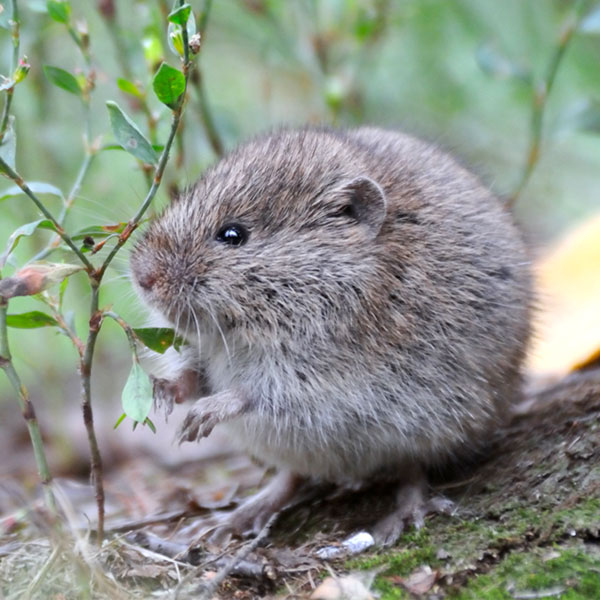Specialist Methods for Vole Control and Avoidance
Specialist Methods for Vole Control and Avoidance
Blog Article
Comprehensive Overview to Reliable Vole Bug Control: Problem Identification and Therapy Techniques
In the realm of effective insect control, vole problems present a special obstacle that demands a critical method. By checking out the nuances of vole habits, understanding key indicators of problem, and examining an array of control choices, one can develop an extensive technique to deal with these evasive insects.
Understanding Vole Habits
Vole behavior is defined by their burrowing habits and rapid recreation prices, making them a difficult bug to control properly. These little rats generally produce elaborate tunnel systems underground, utilizing them for shelter, food storage, and transportation. Voles are herbivores, eating a range of plants, turfs, roots, and light bulbs, which can cause significant damages to gardens, orchards, and yards. Their fast reproductive rate additional complicates control initiatives, with women with the ability of producing several litters in a single year, each having a number of children.
Voles are most active during the early morning and evening hours, spending most of their time foraging for food. Their burrowing routines not only interrupt yards and lawns but likewise make them testing to discover and get rid of. Recognizing vole actions is important for effective parasite control methods. By identifying their burrow areas, keeping track of feeding locations, and executing targeted control techniques, such as trapping or habitat adjustment, vole invasions can be handled efficiently.
Indications of Vole Problem

Prevention Techniques
Carrying out reliable avoidance methods is critical in lessening vole invasions and protecting greenery from their harmful feeding practices (vole pest control). To stop vole invasions, it is vital to begin by getting rid of possible food resources and shelter. Keep turf and greenery trimmed short, remove weeds and debris, and maintain a tidy yard or lawn to make the area less appealing to voles. Setting up obstacles such as hardware towel or underground fencing can additionally assist deter voles from entering certain areas. Furthermore, decreasing excess dampness by fixing leaky pipes and making certain proper drain can make the atmosphere less friendly for voles.
Consistently inspecting the home for indications of vole activity, such as runways and burrow openings, is crucial for early detection and punctual action. If vole task is believed, think about using traps or repellents tactically put near their paths.
Non-Lethal Control Methods
To efficiently manage vole populations while focusing on gentle approaches, non-lethal control strategies provide practical options for reducing vole damage in gardens and landscapes. One reliable technique is the usage of physical barriers such as equipment towel or wire mesh to protect at risk plants. These barriers can be hidden at the very least 12 inches deep and bent at a 90-degree angle to prevent voles from tunneling below. Additionally, environment modification can prevent voles by decreasing their liked food sources and concealing places. Maintaining a well-mowed lawn, getting rid of debris, and keeping plant life cut can make the environment less appealing to voles.

Lethal Control Options
One efficient method for resolving vole invasions in yards and landscapes entails the calculated use of lethal control options. When faced with a severe vole invasion that non-lethal methods have fallen short to contain, carrying out dangerous control actions becomes critical. On the whole, when utilizing deadly control choices, it is necessary to do so properly and in accordance with neighborhood policies to efficiently handle vole problems.
Conclusion
Finally, effective vole pest control calls for an extensive understanding of vole actions, recognition of signs of problem, implementation of avoidance methods, and usage of both non-lethal and lethal control methods. By integrating these strategies, people can properly take care of vole populaces and safeguard their residential property from damages. It is necessary to attend to vole infestations quickly to prevent more problems and reduce the effect on the surrounding environment.
Given the elaborate passage systems and quick recreation prices particular of voles, identifying the signs of vole problem comes to be necessary in efficient insect control. One of the main indicators of vole visibility is the visibility of surface area runways or routes in grass or snow, generally regarding 1-2 inches large, created as voles take a trip in between their burrows and food sources.To properly manage vole populaces while focusing on humane approaches, non-lethal control techniques provide functional services for reducing vole damage in gardens and landscapes.One effective technique for resolving vole infestations in landscapes and yards entails the strategic use of deadly control options. vole lawn damage.In conclusion, effective vole parasite control needs an extensive understanding of vole habits, identification of indications go to my blog of problem, execution of avoidance strategies, and application of both non-lethal and deadly control visite site approaches
Report this page